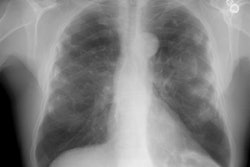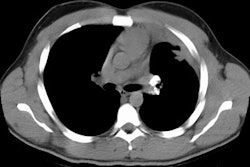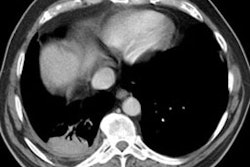Radiol Clin North Am 1991 Sep;29(5):931-941. Occupational lung disease.
McLoud TC
The pneumoconioses, extrinsic allergic alveolitis, lung damage due to irritant gases, fumes, and smoke constitute the occupational lung diseases that affect the lung parenchyma. The pneumoconioses are diseases resulting from the accumulation of dust in the lungs. The ILO has established a standardized system for classification of these pneumoconioses that includes both descriptions of diffuse lung opacities and pleural disease. The most common of the fibrogenic pneumoconioses are silicosis, CWP, and asbestosis. The former two entities are characterized radiographically by the presence of small rounded opacities or nodules in the lung parenchyma. Eggshell calcification may occur in lymph nodes, and eventually the diseases may be complicated by the development of large massive areas of fibrosis in the upper lung zones. Asbestosis, on the other hand, demonstrates small irregular or linear opacities usually confined to the bases of the lungs. It is associated with significant respiratory symptoms and disability. High resolution CT has proved useful in characterizing the parenchymal changes and also in identifying early disease in all of these entities. Berylliosis is a systemic disorder that in its chronic form produces granulomatous disease in the lungs. Radiographically it is characterized by the development of either small rounded or occasionally irregular linear opacities usually confined to the bases. Chemical pneumonitis results from exposure to toxic fumes. The acute reaction may produce diffuse lung injury characterized by air-space disease typical of pulmonary edema. In the chronic form, bronchiolitis obliterans supervenes. This usually is associated with either a normal radiograph or evidence of hyperinflation. Finally, hypersensitivity pneumonitis or extrinsic allergic alveolitis is a response of the lung to inhalation of antigens that may be present in the workplace. Either acute, subacute, or chronic disease may result. In the chronic form, a diffuse reticulonodular pattern with or without associated lymphadenopathy is characteristic.
PMID: 1871262, MUID: 91334741



